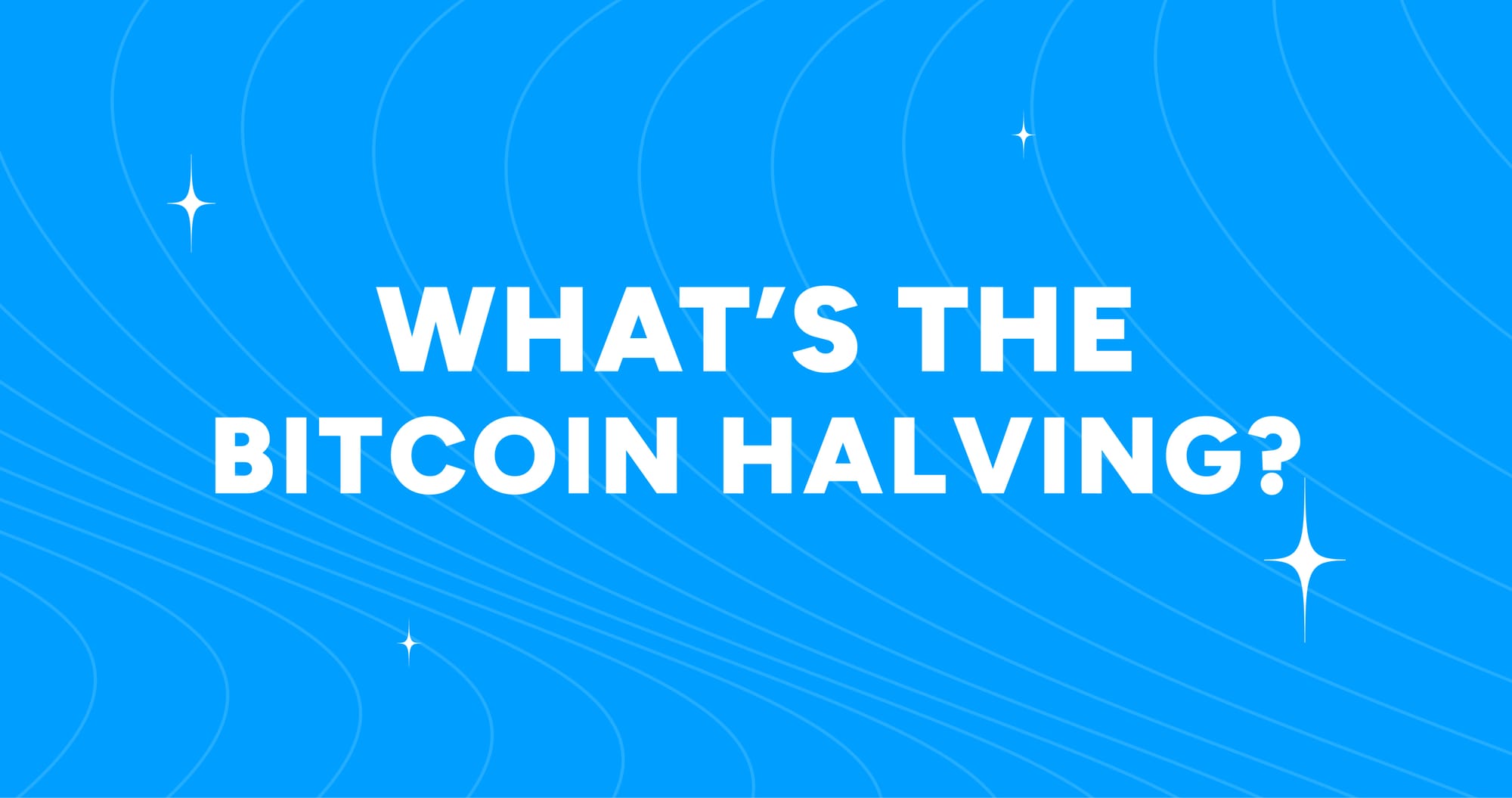🔭 Halving on the horizon: What’s the Bitcoin halving?

2024 is already shaping up to be a phenomenal year for Bitcoin. With the recent approval of Bitcoin-spot ETFs in the US, all eyes are now on another important upcoming event: the next Bitcoin halving.
Expected to arrive at some point in April, the Bitcoin halving could significantly impact Bitcoin's value.
But what is it, and why is this event so important? Let’s explore. 👇
What’s the Bitcoin halving?
As you probably know, Bitcoin miners can earn BTC by solving complex equations, verifying transactions, and adding them to the blockchain. This process is how new BTC enter circulation.
The Bitcoin halving is a predefined event coded into the Bitcoin protocol that reduces rewards for mining new blocks by half. This “halving” occurs every 210,000 blocks, which translates to roughly four years.
At the inception of Bitcoin in 2009, the reward for mining a new block was 50 BTC.
Over time, halving milestones were reached:
- On Nov. 28, 2012, rewards were halved to 25 BTC
- On July 9, 2016, to 12.5 BTC
- On May 11, 2020, to 6.25 BTC
The next halving event is expected to occur in April 2024, with block rewards dropping to 3.125 BTC.
Why is this important?
Halvings highlight the unique economics of Bitcoin. Unlike fiat currencies, where central banks have the power to print money more or less endlessly (Who doesn’t love inflation?), halving events functions kind of like a supply shock.
The purpose of this is to control the supply of BTC and imitate the scarcity and deflationary qualities of precious metals, like gold.
Satoshi Nakamoto, Bitcoin's pseudonymous creator, designed this mechanism with a clear vision in mind: capping the total supply of Bitcoin at a cool 21 million would make the currency a deflationary asset.
By 2032, over 99% of all BTC will have been mined and it’s estimated that it will take until 2140 for all BTC to be mined.
Halvings are also important moments that historically have led to an increase in public interest in Bitcoin and speculation, often resulting in price movements. In the year following the 2012, 2016, and 2020 halvings, the value of Bitcoin rose significantly.
That said, there’s no guarantee that the market will react the same way this time around.
What are the implications for miners and the Bitcoin network?
For miners, the halving is a double-edged sword. The immediate effect is a reduction in income, as rewards for mining new blocks are halved. This can lead to increased pressure on less efficient miners, potentially forcing them to bow out of the market entirely if they can't cover their costs.
However, if the halving leads to a significant price increase, even those halved rewards could turn into a nice little windfall.
With block rewards decreasing, transaction fees could also become a more important part of miners’ revenue, with miners now having more incentive to prioritize transactions with higher fees.
Higher transaction fees could discourage smaller transactions, leading to a situation where only larger transactions are processed on the Bitcoin blockchain. This underscores the importance of scalable solutions to maintain Bitcoin’s usefulness as a digital currency and form of payment.
One of the most promising solutions to this challenge is the Lightning Network. By moving transactions off-chain, the Lightning Network enables microtransactions (think: very small transactions) that otherwise wouldn’t be practical because of the transaction fees. This could open up new ways to use cryptocurrencies, like tipping.
The difference could be Bitcoin functioning like pocket change versus Bitcoin functioning more like gold bars.
The bigger picture
It's important to view halving events in the larger context of Bitcoin's evolution as a more mature financial asset. As fewer new BTC enter the market and more retail and institutional investors acknowledge the potential of Bitcoin, some believe that the price of Bitcoin will eventually become more stable.
Whether you’re new to Bitcoin (welcome! 🤠) or a seasoned pro, we always recommend learning as much as you can about Bitcoin, its history, and the market dynamics at play before you decide on your next move.
With another halving on the horizon, it's a great time for anyone interested in Bitcoin to pay close attention to the market, as you’ll be able to witness the dynamics of supply and demand unfold in real time.
So there you go. Wishing you a happy halving season, and hope you “halve” a blast (😉) witnessing another important milestone for Bitcoin.

